Personalization has long been touted to be the holy grail for e-commerce success.
Countless studies have shown how great personalized products and services can improve target customers’ buying experience, build brand trust, and drive business results.
Unsurprisingly, e-commerce owners want to implement all that personalized content they can to get as many sales as possible. But where do you begin? And is personalization as essential to e-commerce success as everyone claims?
Let’s find out.
Types of Personalization in Ecommerce
Personalization is one of the most powerful ways to increase sales in ecommerce. The key to personalization is knowing what your customers want and how to provide it to them.
There are many different types of personalization, including:
Product recommendations
Product recommendations involve suggesting relevant products or services to customers based on their browsing and purchase history.
It’s one of the most important and common types of personalization in ecommerce. It’s an easy way to provide more targeted content and encourage additional sales from customers who have already shown interest in a particular product or brand.
Zalando, a European fashion retailer, suggests complete outfits based on a customer’s chosen clothing item.
For example, suppose a customer selects a pair of shoes. In that case, Zalando’s algorithms can recommend complementary clothing items like jeans, tops, and accessories, making it easier for the customer to assemble a stylish outfit.
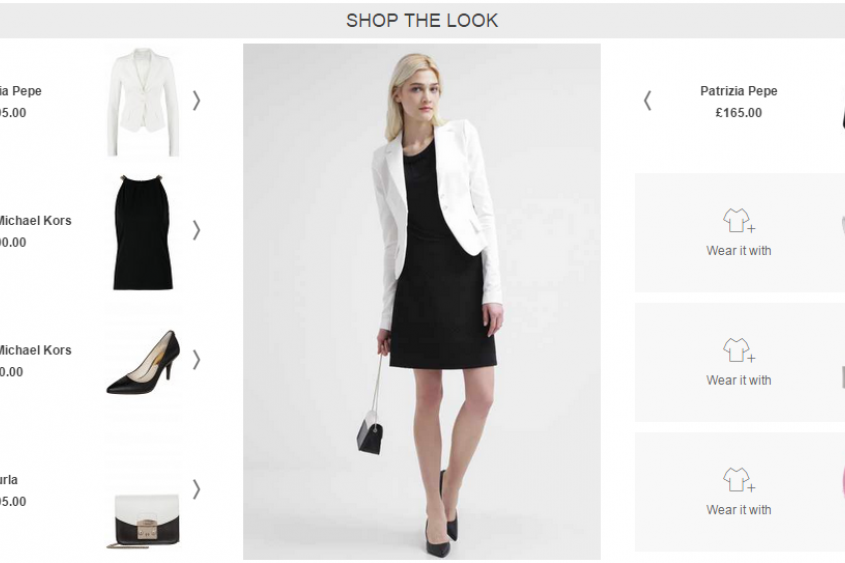
(Source)
The result? According to Zalando, this outfit recommendations tech helps them drive 40 percent larger basket sizes.
Clearly, when implemented effectively, product recommendations can significantly impact a customer’s purchasing decisions.
Content personalization
Content personalization in ecommerce entails tailoring website content to match each visitor’s individual preferences, behaviors, and needs. It encompasses every aspect of your web content, including your product listings, blog posts, CTAs, and landing pages.
Take TUI’s (formerly Thomson Holidays) personalized campaign, for instance.
The travel company utilized real-time weather data to personalize content recommendations. When their target users experienced rainy, cloudy, snowy, or cold weather in their location, the website showed them creative executions featuring ‘sun and sea’ holiday destinations.
This content personalization aimed to create a desire for sunny getaways among users currently facing unfavorable weather conditions.

(Source)
This approach was so successful that TUI reinvested 300% of the original campaign budget into other campaigns.
Email personalization
Email personalization involves tailoring your email campaigns and content to the individual recipient based on their purchase history, behavior, and preferences.
The more your email resonates with the target audiences, the higher will be your customer engagement, open and click-through rates, and sales.
Take Spotify, for example.
The popular music streaming app not only personalizes its music recommendations within its app but also extends this personalization to email.
Subscribers receive regular emails containing playlists and music suggestions based on their listening history and preferences.
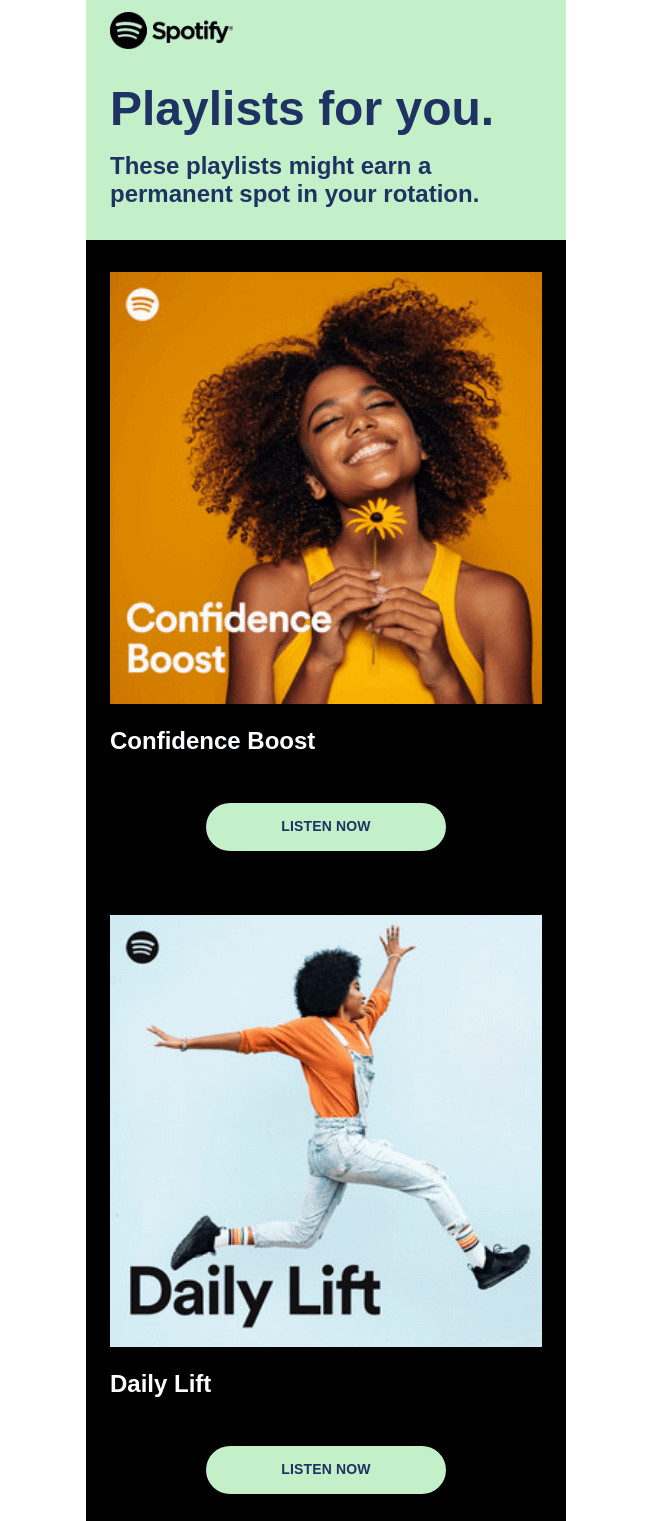
(Source)
User experience personalization
User experience personalization in ecommerce refers to tailoring the entire online shopping experience to individual users.
This means everything from your website layout to website navigation to search results and promotions should be customized based on user’s preferences and behavior.
For instance, Best Buy uses user experience personalization to customize its website layout.
If you’re a frequent shopper of a particular category, like laptops or cameras, the website may rearrange its homepage to emphasize products and promotions related to your interests.
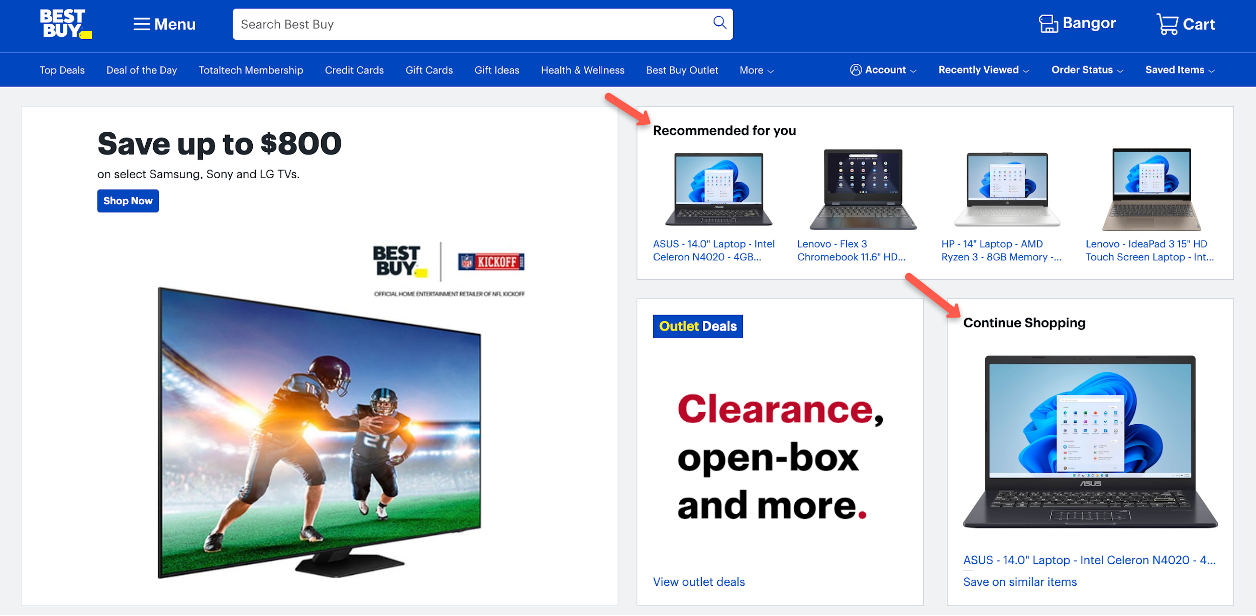
(Source)
Ways to Personalize Your Users’ Ecommerce Experience
Personalization can be as simple as using the customer’s name in your marketing copy, or it can be as complex as customizing the entire user experience based on the individual.
Here are some ways you can personalize the ecommerce experience for your users:
User Profiling:
User profiling involves collecting and analyzing user data to understand their preferences and behaviors. When a user creates an account, you can gather information such as their age, gender, location, and product interests.
Analyzing user profiles allows you to make more accurate product recommendations, tailor marketing efforts, and customize the user experience. For example, if a user identifies as a fitness enthusiast, you can suggest workout gear and supplements.
Personalized Marketing:
Personalized marketing involves tailoring your marketing efforts to individual users.
Running personalized email campaigns is one way to send personal product recommendations to users based on their past interactions with your site.
For example, if a user abandoned their shopping cart, you can send them a reminder email with the items left in the cart along with relevant incentives to complete the purchase.
Dynamic Content:
Dynamic content means the content on your ecommerce site changes based on the user’s behavior and preferences.
For instance, on the homepage, you can display different products to different users, showcasing items that align with their interests or recent searches. A returning customer might see new arrivals or promotions tailored to their past preferences.
Wayfair does it really well.
The popular ecommerce platform especially personalizes its homepage for logged-in customers to enhance their experience.
While the static header and a prominent slider image remain the same, the content below is dynamically personalized based on the user’s data.
For example, a new visitor might see promotions for rugs and bedding. In contrast, a returning customer who has purchased kitchen or closet items before will see content featuring kitchen gadgets and storage tools.
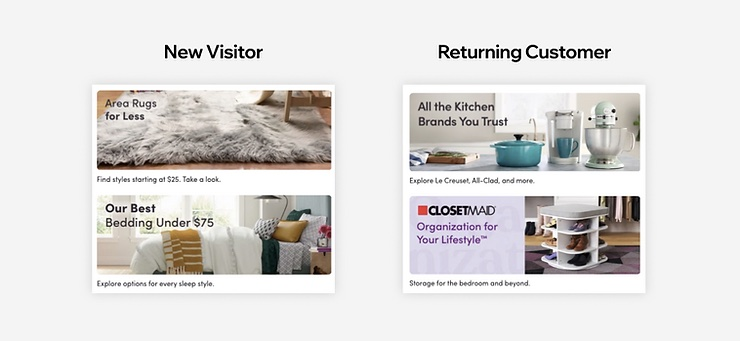
(Source)
Wayfair also gathers user data from other websites like Instagram to further personalize the content for new visitors. This personalization strategy helps them make their users’ shopping experience considerably more relevant and engaging.
Location-Based Personalization:
Ecommerce brands increasingly use geolocation data to personalize the user experience based on the user’s physical location.
For instance, if a user visits your ecommerce site from a specific city, you can display localized promotions, events, and store locations relevant to that area.
This type of personalization is particularly valuable for brick-and-mortar retailers with an online presence.
Impact of Personalization on Ecommerce
1. Improved User Engagement
When you personalize your customers’ ecommerce experience, you make them feel special. ‘
They know they’re not just a sales number for you; you’re investing your time, effort, and money to make the shopping experience as personal as possible.
This naturally helps them stay engaged with your brand.
An example of a brand successfully boosting its engagement through personalization is Netflix.
Netflix’s personalized recommendation system, driven by algorithms that consider your users’ viewing history and preferences, keeps them engaged and watching more content.
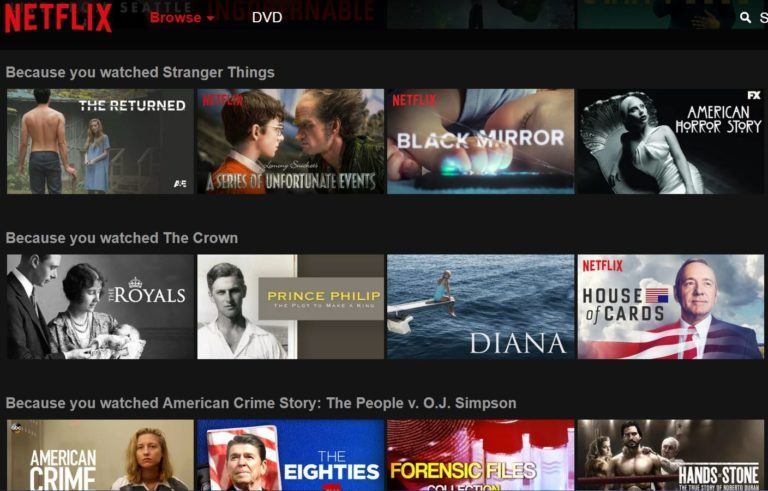
(Source)
This also increases the chances of retaining a subscription and upselling users to higher tiers.
2. Enhanced Customer Satisfaction and Loyalty
Customers are much more likely to return to a site or use an app if they feel like they’re being taken care of.
They want to know that you understand what they need and that you have considered their needs when creating a personalized experience for them. The more tailored your interactions are, the more likely you are to create satisfied and loyal customers.
3. Increased Conversion Rates
According to Statista, 63% of marketers claim they saw an increase in conversion rates due to personalization.
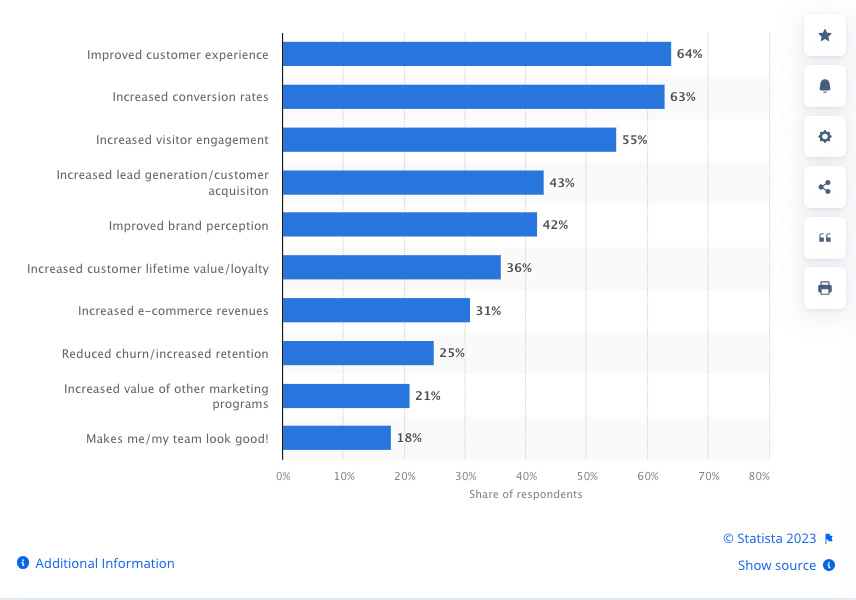
(Source)
This is a significant number, making personalization worth your while.
In today’s world, customers expect to be treated like individuals. When a brand understands its needs and provides unique experiences, it naturally gravitates toward that brand and feels inclined to purchase from it.
4. Higher Average Order Value
Personalized ecommerce allows businesses to target specific groups of customers based on location, demographics, interests, buying history, etc., which results in higher AOV.
Rather than generic recommendations, customers are more likely to purchase from you when they receive products tailored to their needs. For this reason, personalized cross-selling and upselling also result in larger purchases.
Even statistics suggest that companies with the right personalization strategies in place are likely to generate 40% more revenue (McKinsey).
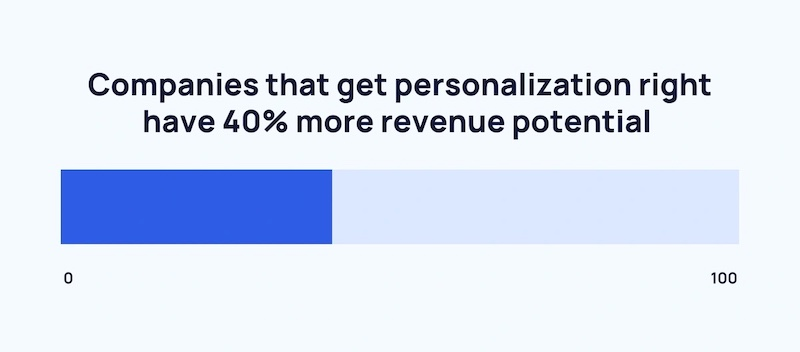
(Source)
Amazon’s “Recommended for You” section is a good example of this.
Like Amazon, you can use data from previous purchases and browsing history to create a personalized list of products based on your customer’s preferences and purchasing history.
Let’s say someone recently bought a Bluetooth speaker but also browsed snow globes on their last visit. You can also recommend one of those – even if they’ve never purchased one.
This is an effective way to increase AOV because it considers all the relevant information about each customer and offers them items based on what they’re most likely to buy in the future.
5. Reduced Cart Abandonment
Personalization can help you reduce the cart abandonment rate by adding an extra step to the purchasing process. This is a great way to get more customer information and tailor their shopping experience.
For example, you could ask them to create a username or select their favorite color for a discount on future purchases.
You could also offer them a personalized discount on their first purchase if they opt-in for emails from you.
Another way is to send them retargeting personalized emails if they leave behind something in their wishlist without making the final purchase.
Here’s an example:
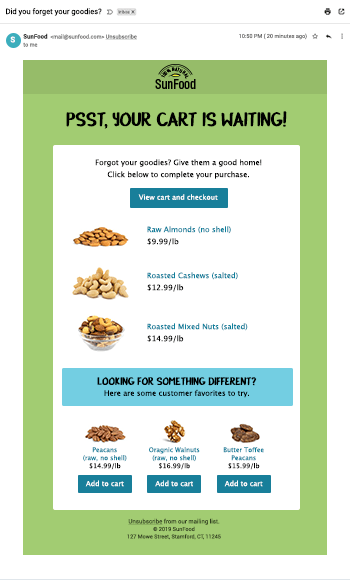
(Source)
To further entice the customer to make the final purchase, you can offer them an extra discount to sweeten the deal. You can include information about free shipping or other benefits your customers will receive if they complete the checkout process.
6. Competitive Advantage
Ever since the perks of personalization became apparent, everyone has been scrambling to incorporate ways to personalize the shopping experience for their customers.
If you’re not just limiting your personalization efforts to cookie-cutter methods like using the customer’s first name in your email subject line, you already have some competitive advantage.
To gain further competitive advantage in your industry, you have to go beyond the basics and create a unique, tailored experience that sets you apart from the competition.
But how can you ensure that your ecommerce store is still competitive without facing any privacy concerns?
Here are some quick tips for competitive advantage through personalization in ecommerce:
- Ask for your customer’s permission, or at least make sure you relay beforehand that you might use their data.
- Be transparent about how you use data.
- Every business is personalizing its user experience based on user demographics and preferences. You can stand out by personalizing based on shopping behavior as well.
- Use product recommendations to guide shoppers toward items they might not have known about otherwise – but don’t push too hard, or you risk turning them off.
- Personalize emails based on what customers buy, not just who they are (this is called “behavioral email marketing”).
- Implement real-time personalization to adapt to user behavior as it happens. For example, display product recommendations or offers based on what a user is currently browsing.
- Continually test different personalization strategies to understand what works best for user segments. A/B testing helps you optimize your personalization efforts.
7. Data-Driven Insights
Personalization is a powerful tool for ecommerce businesses. It can help you drive more sales, increase customer loyalty, and stand out from the crowd.
Beyond that, it also helps you acquire data-driven insights about your customers, which further enables you to personalize their experience.
For starters, you can gather data from various sources, including user profiles, browsing behavior, purchase history, and feedback. The more comprehensive your data, the better you can understand individual preferences.
You can also use heat maps and session replay tools to see how users behave on your site firsthand.
Once you have customer data, divide your customer base into segments based on shared characteristics or behaviors. This allows for more targeted personalization efforts.
For instance, you can create segments like “New Customers,” “Frequent Shoppers,” or “High-Value Customers.”
Additionally, you can gather direct feedback from customers through surveys, reviews, and ratings.
This level of direct feedback will help you understand your customers’ preferences, likes, dislikes, and pain points and use it to personalize their ecommerce experience.
Conclusion: Unlocking the Power of Personalization in E-commerce
Personalization isn’t just an option anymore. If you’re running an e-commerce website, you have to personalize your buyers’ shopping experience – from the moment they visit your site till they turn into buying customers and even beyond that.
And personalization doesn’t just improve sales. It helps you inspire customer loyalty, build a deeper connection with your audience base, enhance user satisfaction, and ensure a competitive edge in the market.



